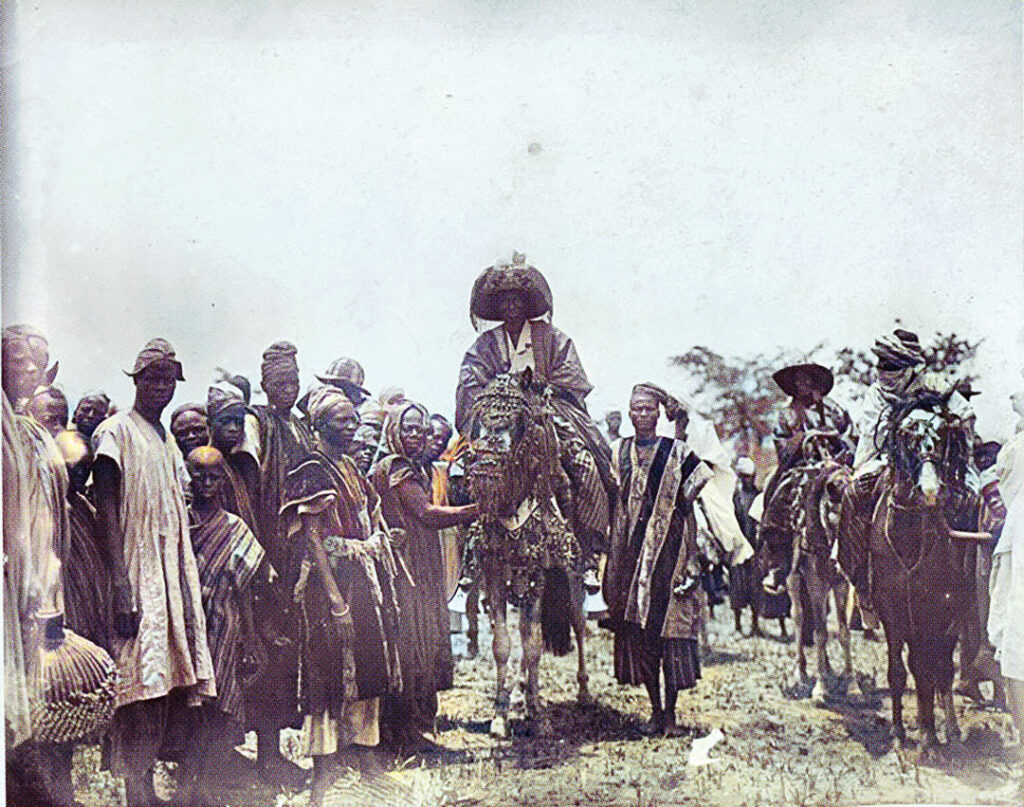There have been fierce, powerful armies throughout the history of Africa, but few were ever so spectacular as the Horsemen of Oyo.
The Kingdom of Oyo had its start in about 1300 A.D., in what are today southern Benin and western Nigeria. Oyo quickly became a trans-Saharan trade center. The Yoruba people traded in salt, leather, kola nuts, ivory, cloth and slaves. Oyo’s climate in the savannah region north of the tropical forests made it relatively free from tsetse fly infestation, which in turn made it easier to raise healthy animals. The excellence of Oyo’s horses made them their most famous commodity.
All this trade made the Oyo Empire rich. The wealth came from taxes, called tribute, paid by surrounding kingdoms.
With such wealth, the kingdom chose to invest in its military, especially in forming a skilled cavalry. These cavalrymen were the backbone of the Oyo military, known for their equestrian skill, bravery in battle and striking appearance. They had no peers among the surrounding kingdoms in terms of their mobility and speed. At its peak, the cavalry had 100,000 horsemen.
The Oyo military leaders came to realize that other armies were intimidated by their horsemen and played upon that fear. The Horsemen of Oyo wore elaborate, dramatic battle attire with brightly colored robes and headdresses and were armed with lances, swords and shields. Their horses were trimmed in feathers, elaborate decorations and heavy armor. The sight of the Horsemen of Oyo charging into battle was said to have been terrifying and awe-inspiring.
The empire’s military success was not solely due to the cavalry, however. The Oyo army was a well-rounded fighting force, with archers and infantry.
Despite their formidable reputation, the Horsemen of Oyo were not invincible. The Dahomey Wars, which began in 1728 against a neighboring kingdom, exposed some of the cavalry’s weaknesses. The Dahomey warriors, armed with firearms, found that the sound of gunshots frightened the Oyo horses, disrupting their charges. Additionally, the Dahomey built fortifications and trenches that neutralized the cavalry’s effectiveness. The Oyo were forced to adapt their tactics and rely more on infantry in certain situations. It took 11 invasions, but the Oyo, largely on the strength of its cavalry, defeated the Dahomey warriors in 1748.
In its time, it was the largest Yoruba-speaking empire and one of the most important kingdoms in all of Western Africa. By the late 18th century, the empire held considerable influence over not just most of the other Yoruba-speaking kingdoms, but also most of the nearby African states.
The Kingdom of Oyo endured, in various degrees of power and influence, for more than 500 years. The end of the kingdom came from within, as palace political infighting eroded the power of the king to the point that he could no longer command the allegiance of his chiefs. With the reduced power within the capital, the kingdom eventually crumbled into smaller parts.
Today, it is best remembered for its time of great wealth and influence. And it is remembered for its horsemen, who had a lasting impact on the history of the continent.

